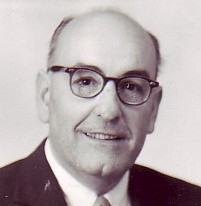
- The Palmer Collector -
Palmer Custom Cues - a Brief History

Peter Balner writes...
“My goal at Palmer was to sell a quality, custom made product that was very attractive at very reasonable prices relative to the market, and offering typical delivery of 3 to 4 weeks when other cue makers had 6 to 12 month delivery periods. At our peak, we were turning out 300 cues per week!”
A special thanks to Peter Balner for his great contribution and recollections.
A Brief History of the Palmer Custom Cue Company
Part 1: Trouble in Paradise
Eugene Balner was a wood turner from Hungary who immigrated
to the U.S. with his wife and 2 children on January 1, 1957. By 1960,
he had opened a shop in Newark, NJ, specializing in the manufacture
of high end lamp parts made from rosewood, mahogany and other exotic
woods. During 1962, Mel Berner, who owned a billiard supply house in
Newark named Alter Bros. & Berner, came to Eugene’s shop to see if he
could make two piece cues for him. Eugene made some rather primitive
cues for Mel, but soon managed to get the quality to an acceptable level
and the cues, which were mostly Merry Widows, sold well at Alter Bros.
& Berner. Eugene added the new product to the other wooden items that
he manufactured.
Eugene was introduced to Frank Paradise some time during 1963. Later that year, he and Frank became partners and started manufacturing cues out of a much smaller shop in Little Falls, NJ. Eugene’s son, Peter Balner, joined them. Frank Paradise was the creative design inspiration and knew all the players in the world of pool. Eugene Balner was the wood turner/machinist who could produce the cues. Frank was not very organized, but Peter Balner, though just a teenager, had a keen mind for the business end of things.
This partnership was brief, lasting only about a year. One day after a tournament, Frank Paradise returned with a batch of orders written on napkins, matchbook covers and scraps. Eugene and Peter went to work and banged out the cues in record time. When they were done, Frank had misplaced the orders. Upset about the lack of organization, young Peter convinced his dad to go out on their own. They did so in 1964 and they set up shop right across the street from Paradise Custom Cues, which had since relocated to Elizabeth, NJ.
The Palmer Custom Cue Company was born.
Above, a recent photo of Pete Margo (left ), Len Grindlinger, center (Peter Balner's father-in-law) and Peter Balner, right
Part 2: The First Catalog Era, 1965 - 1968
From the very beginning, Peter Balner was President of Palmer. He was also the primary designer of the cues over the years, while his father was the expert machinist and master cue-maker. Eugene thought the name "Balner" would not be recognized, so the chose the name "Palmer" after the famed golfer Arnold Palmer, who was a sports idol.
The original line of cues consisted of 8 designs, letters A through H, showcased on a flyer produced in 1965. These designs were incorporated into what is now considered the "First Catalog" in 1966 and with 3 added designs. The First Line Catalog now numbered each cue and also featured two cases, which were made in Brooklyn to Palmer’s design and specifications by a company called the Fine Brothers.
The cues were immediately popular. Many of the cues were built from house cues acquired from bars and pool rooms for 50 cents each. These included the 4 prong bar cues of various woods as well as the traditional Titlist forearms. The word "conversion cue" had not yet been invented, but this is exactly what Palmer was building, custom conversions on famous designs. Cues like the Willie Hoppe's in ebony, Brazilian rosewood, and cocobolo, even cues from the early 1900's like the Model 26 1/2 were used for their beautiful veneers and exotic woods. The best cues were saved for the premium designs.
The genuine oyster mother of pearl inlays were first supplied by H.W. Wild, Inc., in NYC, a supplier to guitar makers, who also carried many parts such as multi colored purfling and marquetry products. This contact gave the Balner’s many imaginative ideas. Eugene Balner carefully laid out the inlays by hand and cut the pockets, while Ilona placed and fit the inlays. By 1967 Palmer was producing sufficient quanities of inlaid cues to order pearl shapes direct from the fabricator in Germany. This gave them the ability to order thicker shapes than the original guitar inlays. This made the task of hand inlaying cues much easier and gave them the cleanest edges available.
The first windows were made from Plexiglas. Under the windows, the customer’s name was stamped on thick black glossy paper similar to what Frank Paradise was using. Around 1964 they began using Mylar rather than the paper. It was easier to work with, as it had an adhesive backing. In the early days, both Palmer and Paradise used Newark Pen Shop for their names. Palmer then bought a hot stamping machine (Ackerman-Gould) and a font of loose 12 point type, and began to make the name strips themselves. This job fell mostly on Ilona Balner, who was also known for her immaculate wraps.
Because the Plexiglas was subject to deforming due to pressure from the screw and temperature changes, in about 1968 Palmer turned to extruded plastic and developed the first pearlescent plastics used in the butts . Colt Industries in New York manufactured the pearl rods which were 1 3/8" and 7/8" diameter lengths of 36", in white initially, later black, which were used for the pearl butt caps, a Palmer innovation, and joint trim.
Eugene Balner, Hall of Fame Master Cue Maker in a seldom seen photo from 1962.
